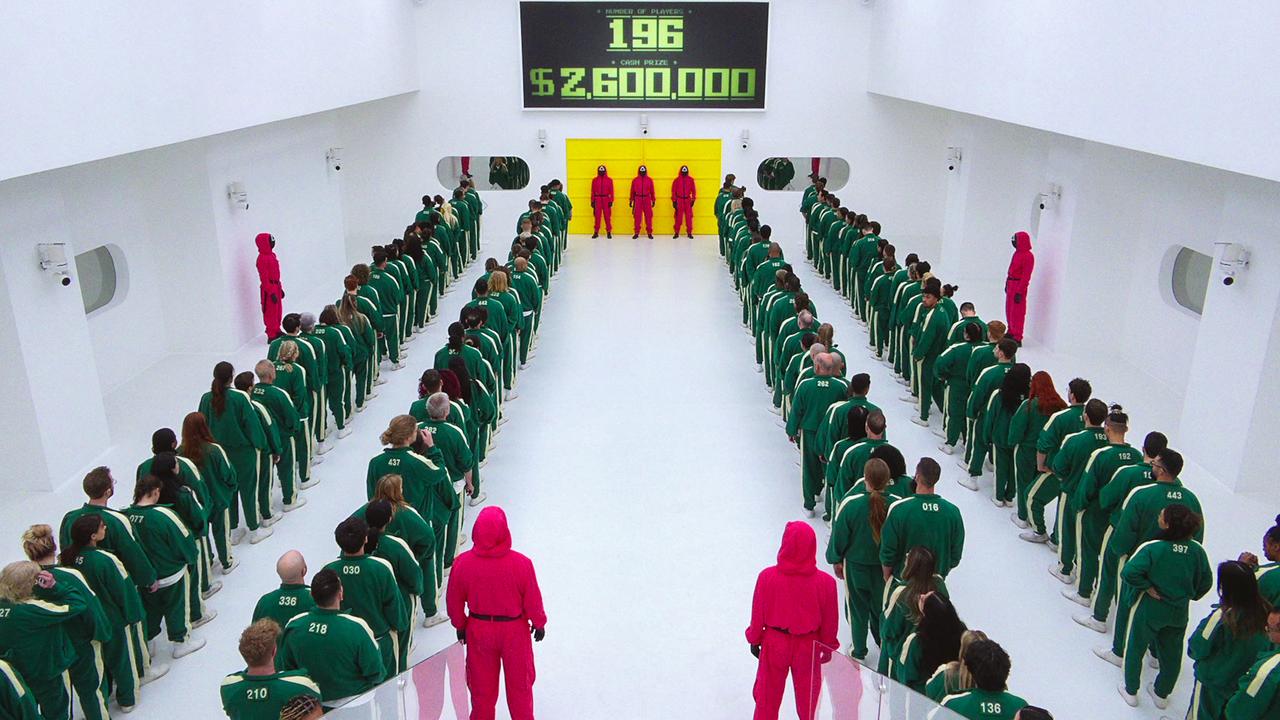One big problem with Netflix’s Squid Game reality show
A new reality show on Netflix sees contestants win an enormous $4.56m prize – but the show is doing more harm than good.

COMMENT
When Netflix announced they were making a reality competition based on the hit series Squid Game, many waited with bated breath knowing that more harm than good would come out of it. And they were right.
From the get-go, the reality show has been plagued with controversy as several former contestants claimed they spent “hours” in freezing weather and faced medical issues while filming. Later, another contestant called it the “cruellest, meanest thing” they’ve ever endured.
Netflix has since denied the accusations, writing in a statement that they “care deeply about the health and safety of our cast and crew.”
But now that the first five episodes of the show have been released, it’s easy to note the exploitative nature of the competition.

The talking head segments with the players, dispersed between challenges, often involve them discussing what they’d do with the cash prize and reflecting on their current financial situations.
Like the fictional series, the reality show follows 456 players as they compete in a variety of games to win a $4.56 million cash prize. The cash reward is reportedly the largest in game in reality show history.
In the fictional drama, “elimination” meant death and to carry the high stakes through to the reality show, Netflix has the losing contestants pretend to dramatically fall to the floor after being pelted with a paint gun.

The first episode features two contestants opening up about how winning the show would change their lives. “Who’s not in debt? We’re facing a recession,” says Starla, contestant 318, to the cameras. “But you’re dreaming, you’re taking a chance. What’s that like to be able to pay off your house? What’s that like to pay off your car? … I got my own dreams. They may not be much but I’ve got dreams too.”
After the first round of eliminations take place, the rules of the game are explained.

In the dorm room, a screen depicts the faces of the eliminated players and a total count of who’s currently in the game. A giant clear ball hangs from the ceiling and as each player gets eliminated, more money is added to it, until it totals to the grand prize. Looking at the ball, Contestant 243 Stephen says, “Holy crap, that’s so much money! I don’t come from old money, I come from broke money.” Then when explaining what he’d do with the prize, he says, “I wanna help my family out, I want to support my girls for the rest of their life, financially. It would be everything.”
Given these admissions, the elimination sequences are hard to watch and sometimes feature contestants in tears and frustration, but Netflix quickly skirts over those moments and quickly moves on to the next challenge.
Here’s the issue: in the fictional series, it was obvious who the villains were. But what about with Squid Game: The Challenge? This is a reality show that takes real-life people — many of whom are admittedly are in debt or low income — and film them as they fight to the “death” for a cash prize. The only entity to place blame on is Netflix. Though, when we do that, what does it say about us — the people watching the show?
This story originally appeared on Decider and is republished here with permission.





